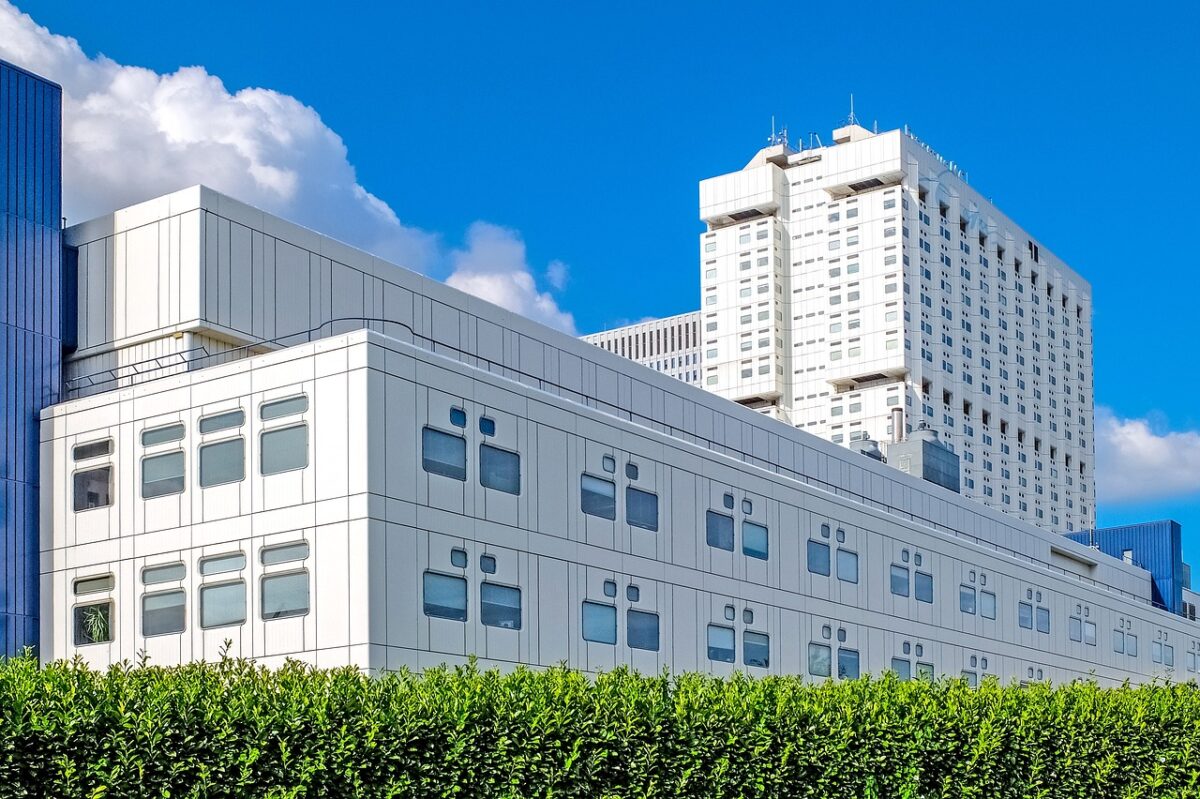Healthcare real estate is an industry undergoing tremendous transformation powered by digital technology. Innovations in healthcare are changing the way patients receive healthcare services. One of the key drivers of this growth is the emphasis on enhancing the patient experience. Timur Yusufov explores the innovative designs in healthcare real estate that are employed to improve the patient experience.

Integrated Technology:
Gone are the days when healthcare was a purely physical process. Technology now plays a key role in the healthcare industry, and integrating tech into healthcare design can improve the patient experience. For instance, virtual consultations and telemedicine software are becoming popular, especially during the pandemic.
Including iPad check-in stations and wayfinding digital signage throughout facilities can improve the patient’s overall experience. The use of smart healthcare technologies makes hospital operations more efficient and effective.
Electronic Health Records (EHR) systems have also streamlined patient records and improved information sharing between healthcare providers. Patients can easily access their medical history and test results, reducing wait times and making appointments more efficient.
Biophilic Design:
The concept of biophilic design is fast gaining traction in healthcare real estate. This innovative design emphasizes the importance of natural environments in healthcare facilities. It involves using natural materials such as wood and stone to create a calm, peaceful, and relaxing environment for patients.
The benefits of incorporating nature into healthcare facilities include reducing anxiety and stress levels, speeding up the healing process, and enhancing patient satisfaction. Biophilic design enhances a sense of calm, and patients often report comfortable and peaceful hospital stays.
Flexible Designs:
Flexibility is essential in healthcare design solutions since the needs of patients vary. From changing a patient’s daily routine to accommodate their treatment protocols or accommodating the spatial needs of a care team, a flexible design is essential to ensuring the comfort and care of patients.
Modular designs are essential in healthcare facilities as they allow for adaptability, and changes can be made in real time. The modular design ensures that healthcare facilities can easily accommodate unique care processes and medical equipment.
For example, flexible furniture and equipment placement allow for easy reconfiguration of a room to meet the specific needs of patients. This can include adjustable beds and seating arrangements that cater to patients with different medical conditions or mobility issues. Flexible designs also consider the needs of caregivers, allowing for ease of movement and better care delivery.
Homely Environment:
Hospitals can be scary and stressful for patients, and the unfamiliar environment and medical equipment contribute to this feeling. As a response, modern healthcare facilities incorporate a homely environment with interior design and styling that provides comfort and warmth to patients. Incorporating homely touches such as soothing color schemes and personalized patient rooms and dining areas creates a comfortable and nurturing ambiance in the hospital.
This design concept can improve the patient’s mood, speed up their healing process, reduce stress, and enhance their overall feeling of being in a safe space. On the other hand, for long-term care facilities, the homely environment design has a positive effect on the mental well-being of patients. It helps to create a familiar and comfortable atmosphere that aids in maintaining a sense of independence and dignity among residents.
Accessible Designs:
Healthcare is essential, and designing hospitals accessible to all patients is significant. Accessible design means designing healthcare facilities that cater to patients with disabilities, seniors, or any physical limitations. An accessible design incorporates accessible furniture, ramps, wide hallways, and doors outfitted with automatic door-openers. An accessible design creates a welcoming environment for physically-disabled patients and their families and caregivers.
For instance, a hospital may have an accessible design that includes sign language interpretation for patients who are deaf or hard of hearing. This creates an inclusive environment and enhances the patient experience for all.
Conclusion:
Innovative designs in healthcare real estate that enhance the patient experience are vital to the healthcare industry’s transformation. From integrating tech to biophilic designs, flexibility, homely environments, and accessible designs, each design innovation aims to create a comfortable and nurturing patient atmosphere. The healthcare industry is rejecting the traditional clinical approach and adopting these innovative designs that help patients feel more at home with their surroundings. Enhancing the patient experience cannot be overstated; these designs are vital to improving the healthcare experience for all.
